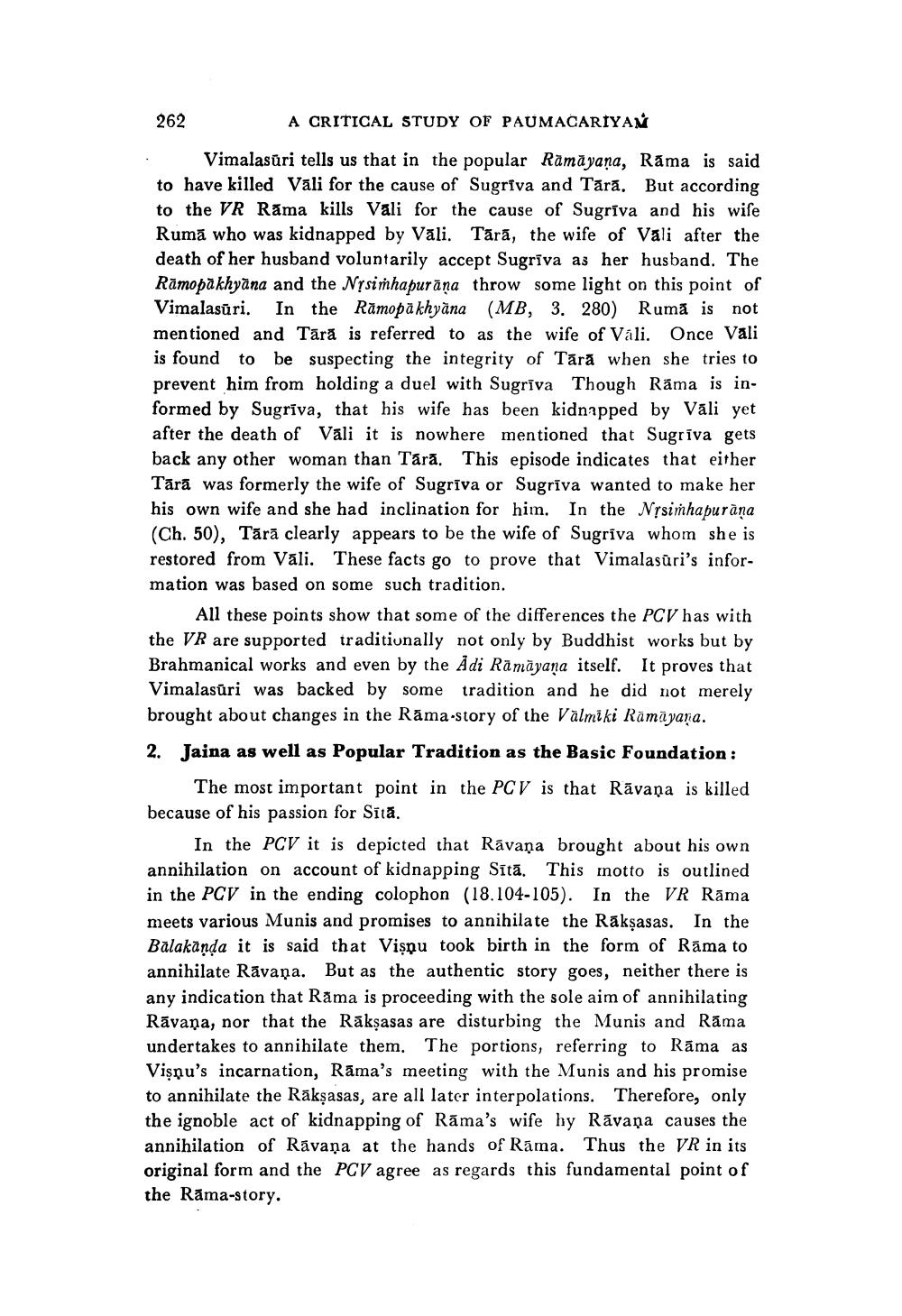________________
262
A CRITICAL STUDY OF PAUMACARIYAM
Vimalasūri tells us that in the popular Ramayana, Rama is said to have killed Vali for the cause of Sugriva and Tara. But according to the VR Rama kills Vāli for the cause of Sugrīva and his wife Ruma who was kidnapped by Vali. Tārā, the wife of Vali after the death of her husband voluntarily accept Sugrīva as her husband. The Ramopakhyāna and the Nrsimhapuraṇa throw some light on this point of Vimalasūri. In the Rămopakhyāna (MB, 3. 280) Rumā is not mentioned and Tara is referred to as the wife of Vali. Once Vali is found to be suspecting the integrity of Tara when she tries to prevent him from holding a duel with Sugrīva Though Rama is informed by Sugrīva, that his wife has been kidnapped by Vali yet after the death of Vali it is nowhere mentioned that Sugrīva gets back any other woman than Tara. This episode indicates that either Tārā was formerly the wife of Sugrīva or Sugrīva wanted to make her his own wife and she had inclination for him. In the Nrsimhapurana (Ch. 50), Tără clearly appears to be the wife of Sugrīva whom she is restored from Vali. These facts go to prove that Vimalasuri's information was based on some such tradition.
All these points show that some of the differences the PCV has with the VR are supported traditionally not only by Buddhist works but by Brahmanical works and even by the Adi Ramayana itself. It proves that Vimalasuri was backed by some tradition and he did not merely brought about changes in the Rāma-story of the Valmiki Rāmāyaṇa. 2. Jaina as well as Popular Tradition as the Basic Foundation:
The most important point in the PCV is that Rāvana is killed because of his passion for Sītā.
In the PCV it is depicted that Ravana brought about his own annihilation on account of kidnapping Sītā. This motto is outlined in the PCV in the ending colophon (18.104-105). In the VR Rāma meets various Munis and promises to annihilate the Rākṣasas. In the Balakaṇḍa it is said that Visņu took birth in the form of Rāma to annihilate Rāvana. But as the authentic story goes, neither there is any indication that Rama is proceeding with the sole aim of annihilating Ravana, nor that the Rākṣasas are disturbing the Munis and Rāma undertakes to annihilate them. The portions, referring to Rāma as Vişņu's incarnation, Rama's meeting with the Munis and his promise to annihilate the Rākṣasas, are all later interpolations. Therefore, only the ignoble act of kidnapping of Rama's wife hy Ravana causes the annihilation of Ravana at the hands of Rama. Thus the VR in its original form and the PCV agree as regards this fundamental point of the Rama-story.




